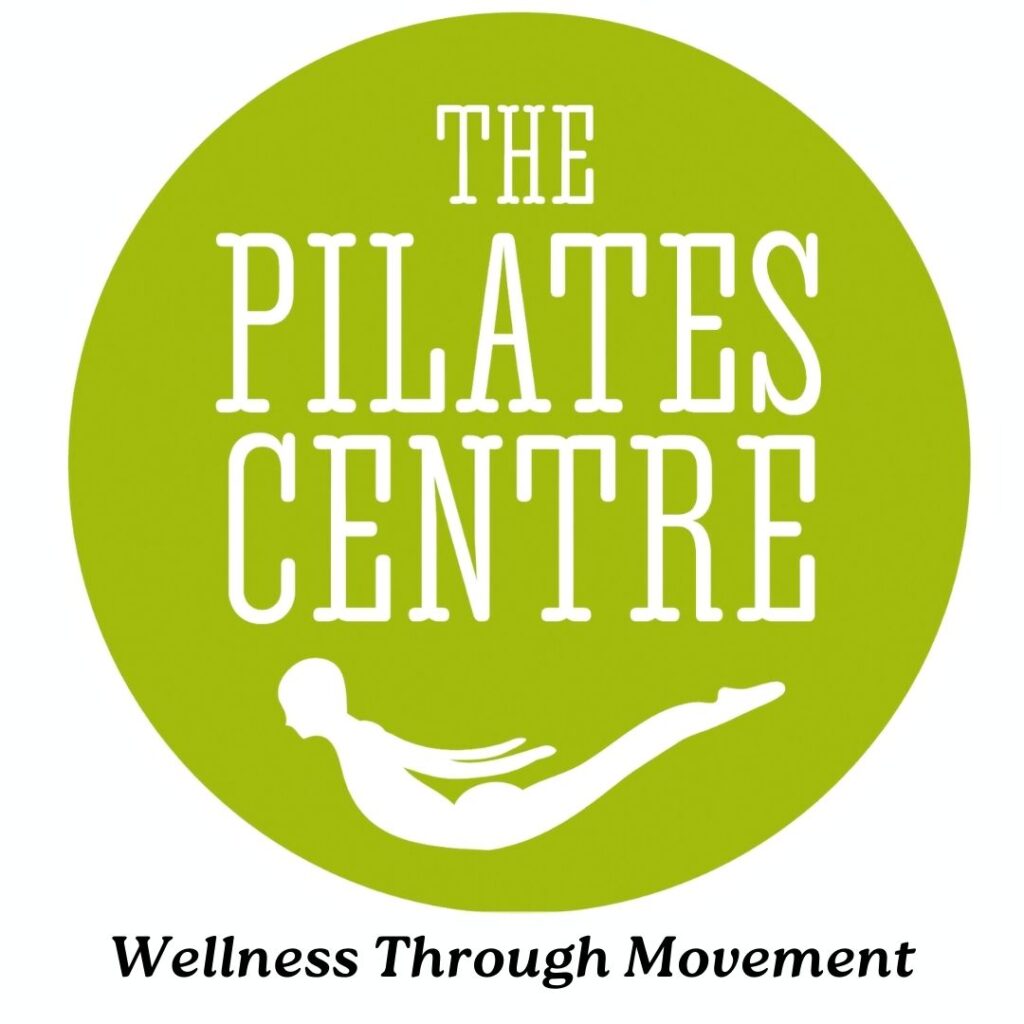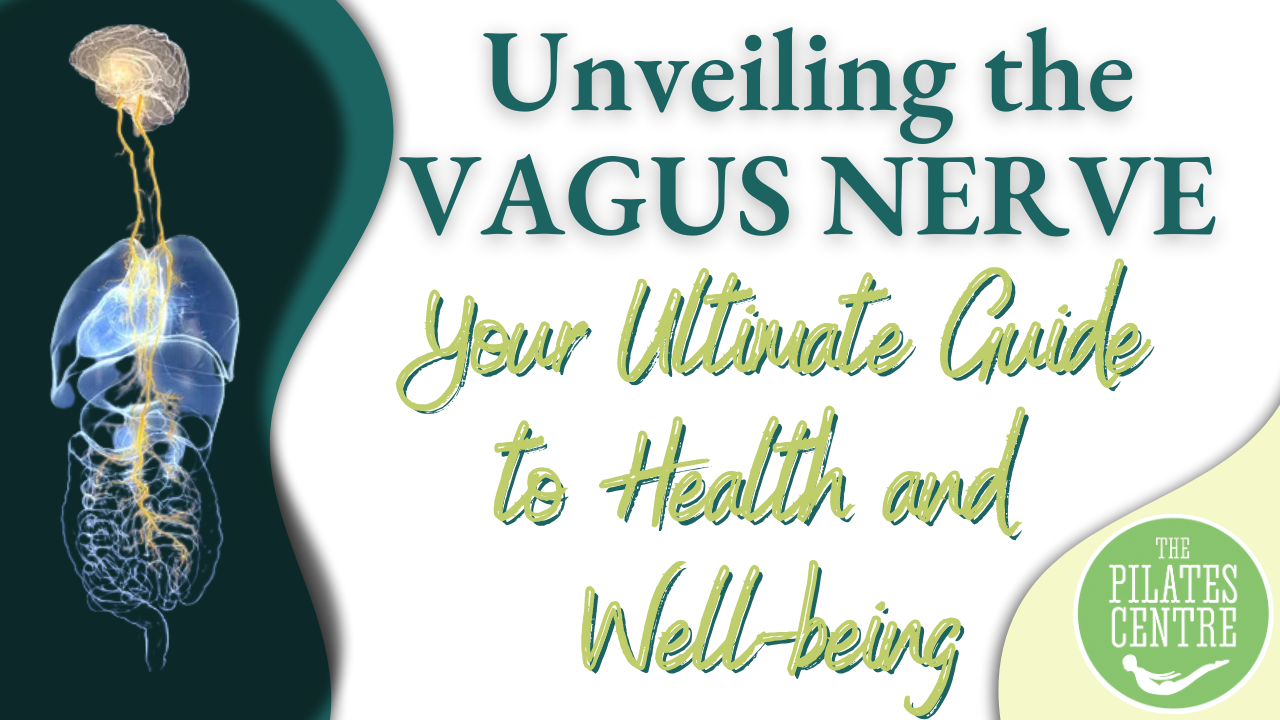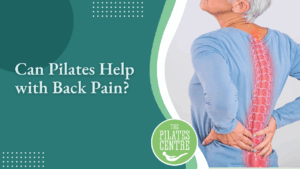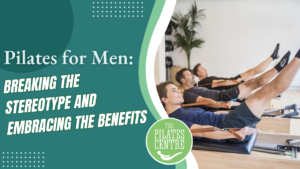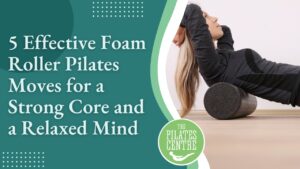INTRODUCTION: The Remarkable Power of the Vagus Nerve
In the complex orchestra of the human body, there exists a conductor, an air traffic controller, and a superhighway all rolled into one – the vagus nerve. This remarkable neural network touches every aspect of our physiological functioning, and harnessing its power can yield immediate and profound improvements in our well-being.
Metaphors come easily when describing the Vagus nerve:
• It’s the superhighway that ferries essential information between your brain and all your internal organs.
• It resembles a symphony conductor, finely tuning the tempo and volume of your nervous system’s response.
Like air traffic control, it diligently monitors and manages the countless moving parts to ensure that all the physiological airplanes reach their destinations safely and efficiently.
In an era where hyperbole often reigns supreme, it’s tempting to dismiss vagus talk as another fleeting trend in the wellness culture. However, the reality is that physicians have been pondering the vagus nerve’s impact on bodily functions since the days of the Roman Empire. Today, we’ve discovered that simple exercises, including movements and breathwork, can be employed at home to manually stimulate the vagus nerve during stressful times, triggering our body’s innate relaxation response.
Moreover, electronic vagus nerve stimulation is offering new hope and sustainable results for patients dealing with conditions as diverse as epilepsy, rheumatoid arthritis, and Crohn’s disease. The vagus nerve’s unique power lies in its ability to influence physical and emotional conditions that often defy traditional medical interventions. When people exhaust their options for treating medical disorders or managing stress, they turn to the vagus nerve and witness its astonishing potential.
But the exciting news doesn’t stop there. Emerging research and testimonies from experts highlight how Pilates, a low-impact form of exercise focusing on breath and mindful movement, can play a crucial role in improving vagus nerve tone and promoting overall well-being.
BUT FIRST, WHAT EXACTLY IS THE VAGUS NERVE?
The Vagus nerve, also known as the tenth cranial nerve, originates in the brain stem and extends through the face, neck, lungs, heart, diaphragm, and abdomen, reaching vital organs such as the stomach, spleen, intestines, colon, liver, and kidneys. The term “vagus” derives from Latin, meaning “wanderer” – a fitting name for the longest cranial nerve, which plays a pivotal role in mood regulation, immune response, digestion, and heart rate.
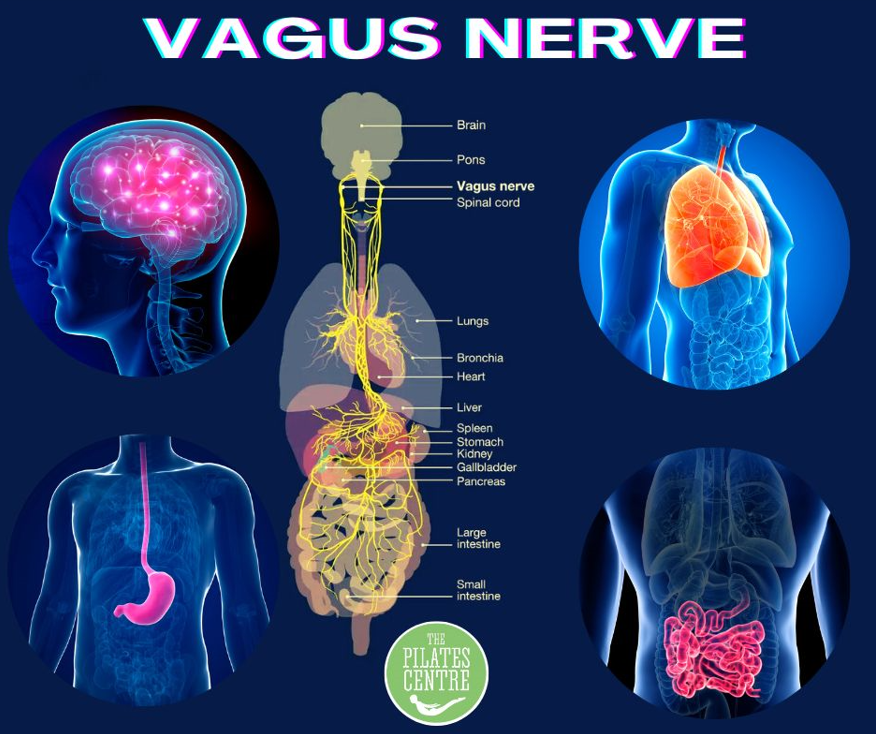
THE VAGUS NERVE AND ITS BRANCHES
WHY THE RECENT BUZZ ABOUT THE VAGUS NERVE?
Whether you’ve heard about the vagus nerve before or this is your first encounter, it’s hard to ignore its rising prominence. You’ll start noticing discussions about it everywhere, from podcasts and social media groups to mainstream news articles. Justin Sunseri, a Marriage and Family Therapist, launched The Polyvagal Podcast in 2019, creating a community deeply interested in all things vagus nerve.
Similarly, Sela Weaver, from Seattle, initiated the Vagus Nerve Study Group in 2015, which has since transformed into a thriving Facebook community with over thirteen thousand members. These enthusiasts explore the vagus nerve’s potential as not only a discrete anatomical structure but also as a map guiding us to a novel perspective on our bodies, emotions, and interactions with the environment.
ELECTRONIC VAGUS NERVE STIMULATIO (VNS): A Medical Marvel
On the medical front, Dr. Kevin Tracey, a neurosurgeon, has pioneered bioelectrics, involving the implantation of small electronic devices under a patient’s skin to send electrical impulses to the vagus nerve. His groundbreaking study in 2002 revealed that vagus nerve stimulation could control the body’s production of tumor necrosis factor (TNF), a molecule linked to inflammation. This discovery led to clinical trials on patients with conditions like rheumatoid arthritis, resulting in reduced pain, improved mobility, and lower TNF levels.
Vagus nerve stimulation has also shown promise in treating epilepsy, depression, and potentially a wide array of conditions, including Alzheimer’s, cancer, diabetes, and hypertension. While researchers navigate extensive clinical trials and FDA approval processes, there’s encouraging news for those seeking vagus nerve benefits without surgical intervention.
MANUAL STIMULATION OF THE VAGUS NERVE: Taking Matters into Your Own Hands
Gregg Johnson, a physical therapist, and functional manual therapist, uses manual techniques to stimulate the vagus nerve. His discovery of the vagus nerve’s significance came when he helped a student with high blood pressure find relief by addressing tension in the vagus nerve. Since then, Johnson has employed manual vagus nerve stimulation to assist patients dealing with various issues, from irritable bowel syndrome to fertility problems.
Fortunately, there are numerous ways to manually stimulate the vagus nerve at home through breathwork and movement. But before we dive into these techniques, let’s gain a deeper understanding of the vagus nerve’s function and anatomy.
FUNCTION OF THE VAGUS NERVE: The Autonomic Nervous System
The vagus nerve is a vital component of the autonomic nervous system, responsible for regulating unconscious bodily functions like heart rate, breathing, and digestion. This system comprises two branches: the sympathetic branch, often referred to as the “on” switch, and the parasympathetic branch, known as the “off” switch. The vagus nerve resides within the parasympathetic branch, which supports relaxation and restoration.
Dr. Stephen Porges and his Polyvagal Theory, introduced in 1994, shed light on how the vagus nerve functions within the parasympathetic branch and how we can influence it through breath and movement.
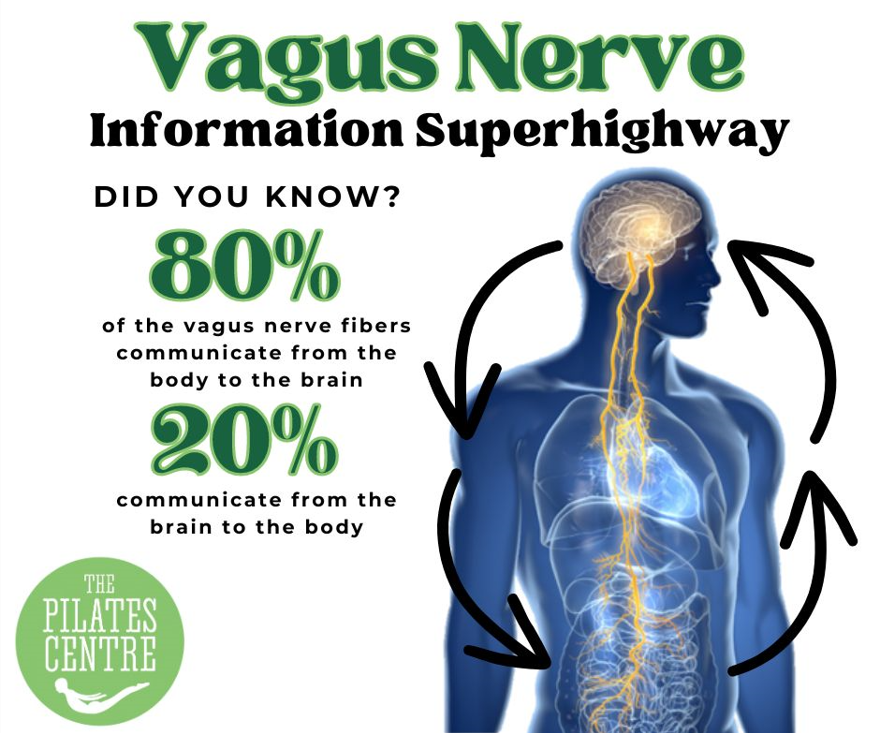
THE POLYVAGAL THEORY: Understanding Vagus Nerve Responses
Dr. Porges identified two pathways of the vagus nerve: the dorsal complex and the ventral complex.
- The dorsal complex, a relic from our pre-mammalian ancestors, influences organs below the diaphragm, like the stomach, liver, and kidneys. It triggers system shutdown responses, including a drop in blood pressure, potentially leading to fainting or shock during extreme danger.
- The ventral complex, a newer development in mammalian evolution, regulates heart rate and facial and head muscles. It promotes a state of social engagement, crucial for cooperation and community living.
The sympathetic branch, situated between the dorsal and ventral complexes, enables mobilization in response to stress, commonly known as the fight-or-flight reaction.
POLYVAGAL THEORY PRINCIPLES: A Guide to Navigating Vagus Nerve States
The Polyvagal Theory revolves around three key principles:
- Hierarchy: The autonomic nervous system responds predictably to environmental cues, either following the sequence from the oldest to newest neural circuits (dorsal, sympathetic, ventral) or in reverse (ventral, sympathetic, dorsal).
- Neuroception: This concept, coined by Dr. Porges, describes how our autonomic nervous system subconsciously assesses safety or danger cues in our environment. It involves bidirectional communication between the brain and body, with the body communicating more often to the brain – our “gut feeling.”
- Co-regulation: This refers to the mutual regulation of physiological states between individuals. For example, a mother soothing her baby creates a reciprocal calming effect. We have a biological need to connect with others to maintain a sense of safety and well-being.
THE POLYVAGAL LADDER: A Visual Guide to Vagus Nerve States
Dr. Porges, in his book “The Polyvagal Theory in Therapy,” introduced the concept of the polyvagal ladder to visualize our physiological changes as we transition through the autonomic nervous system’s three neural circuits.
- Ventral Vagus: At the top of the ladder, you’ll find feelings of safety, comfort, and engagement with the world around you. It’s a state of contentment, free from acute worries.
- Sympathetic: Just below the ventral vagus, the sympathetic state kicks in when you detect potential risks. It includes increased heart rate, sweating, and racing thoughts, whether triggered by a minor concern or a severe threat.
- Dorsal Vagus: At the bottom of the ladder, the dorsal vagus induces shutdown responses. In response to extreme stress, it can manifest as extreme sadness or even depression.
You can move up or down the polyvagal ladder depending on circumstances. For example, a stressful situation may temporarily push you down the ladder, but resolving the issue can swiftly bring you back up.
How to Map Your Own Nervous Sytem: The Polyvagal Theory
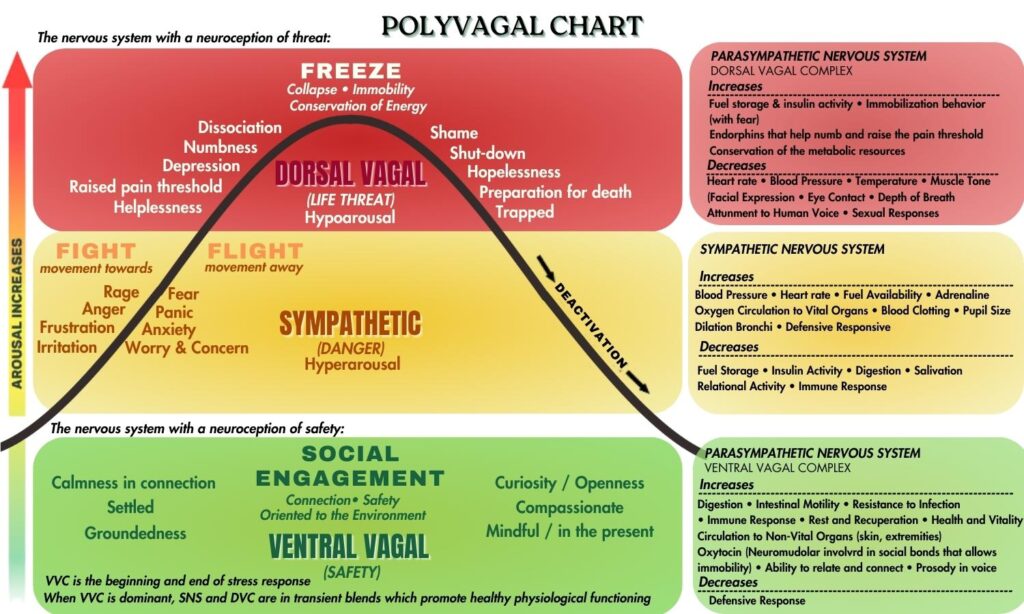
HOW TO ASCEND THE POLYVAGAL LADDER USING BREATHING
Being stuck in sympathetic or dorsal states can be mentally, emotionally, and physically draining. Fortunately, you can ascend the polyvagal ladder and incorporate the safe and social feelings of the ventral state through controlled breathing. Dr. Stephen Porges recommends slow, deep, diaphragmatic breathing with an emphasis on prolonged exhales. This simple technique slows your heart rate and signals safety to your body.
PILATES: Your Pathway to Vagus Nerve Health
Now, let’s explore how Pilates, a form of exercise renowned for its low-impact nature and emphasis on breath and mindful movement, aligns with the vagus nerve’s mission to regulate stress and enhance overall well-being.
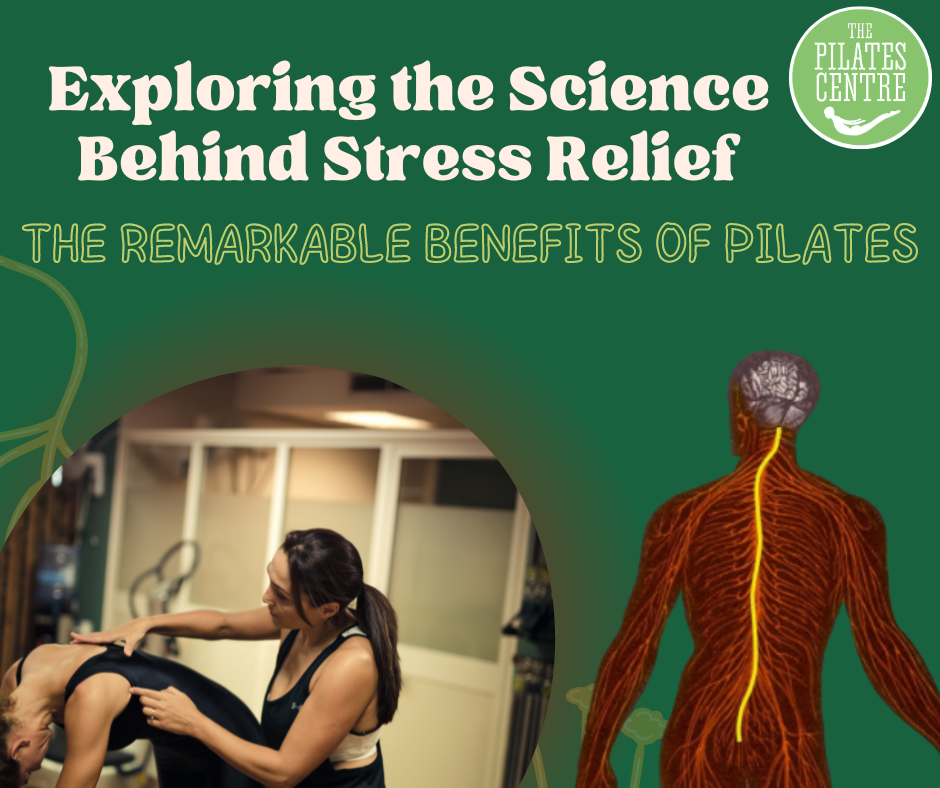
HOW PILATES HELPS US DE-STRESS
Pilates provides a holistic approach to managing stress and regulating the nervous system. Here’s how it accomplishes this:
- Breath and Mindful Movement: Pilates places a strong emphasis on controlled, diaphragmatic breathing – a key factor in stimulating the vagus nerve’s calming response. By synchronizing breath with precise, controlled movements, you create a powerful mind-body connection that promotes relaxation.
- Postural Alignment: The Vagus nerve’s impact on postural alignment cannot be underestimated. When the nerve maintains a clear pathway from the brainstem through the diaphragm into the abdomen, it fosters harmony in various bodily functions, including speech, facial expressions, and digestive efficiency. Pilates helps align your body, promoting better posture and improved vagus nerve function.
- Strength and Balance: Pilates exercises focus on strengthening deep stabilizing muscles while releasing tension in other muscles. Over time, this enhances muscular balance, movement quality, and joint alignment, reducing the risk of wear and tear and the potential for injury.
- Energy and Focus: Pilates offers a versatile approach to vagus nerve stimulation. When you’re fatigued or feeling low on energy, quicker-paced Pilates exercises can re-energize your body and enhance your ability to focus. Conversely, during moments of overstimulation or anxiety, Pilates can help you relax by connecting your breath to movement and slowing down.
“Pilates exercises focus on strengthening the deep stabilizing muscles and releasing the accumulated tension in other muscles. In time, this will help them to regain their ideal balance and length, which improves movement quality and alignment of the joints, avoiding wear and tear and the risk of injury.”
CONCLUSION: Embrace the Power of Your Vagus Nerve
In the world of science, the vagus nerve offers numerous exciting possibilities. Yet, the most significant revelation is that you possess the ability to tap into this wandering nerve’s potential right now. While researchers continue to explore modern medicine’s applications for the vagus nerve, you can initiate the process by simply breathing and listening to your body’s cues. Your journey toward well-being and health begins with understanding and embracing the power of your vagus nerve. And as you embark on this journey, remember that Pilates, with its focus on breath, mindful movement, and alignment, can be a valuable companion in your quest for a healthier, more balanced life.
ABOUT THE AUTHOR

John McCallum
is an esteemed, Fully Certified Comprehensive Classical Pilates Teacher and takes immense pride as the proprietor of the distinguished Pilates Centre located in Jalon, Spain. His remarkable journey in the realm of Pilates commenced back in 2006, a pivotal juncture when he confronted the diagnosis of three slipped discs in his lower back. Pilates emerged as a beacon of profound hope and rejuvenation in his life. Instead of succumbing to the prospect of surgical intervention, Pilates gracefully assumed the role of his lifeline.
This transformative experience impelled him to make a resolute decision that would reshape his life’s trajectory. Following his journey to become a Pilates Teacher, he passionately extended the benefits he had personally garnered to those in need. This also took him to travel to other countries to continue to learn and have a fuller understanding of the method.
Fueled by an unwavering passion for Pilates, he has forged a dynamic collaboration with a reputable research institution. This strategic alliance enables him to deliver precise and illuminating insights, fostering support and empowerment for individuals interested in the power of this method. His literary contributions have garnered distinction within an array of esteemed global publications.
